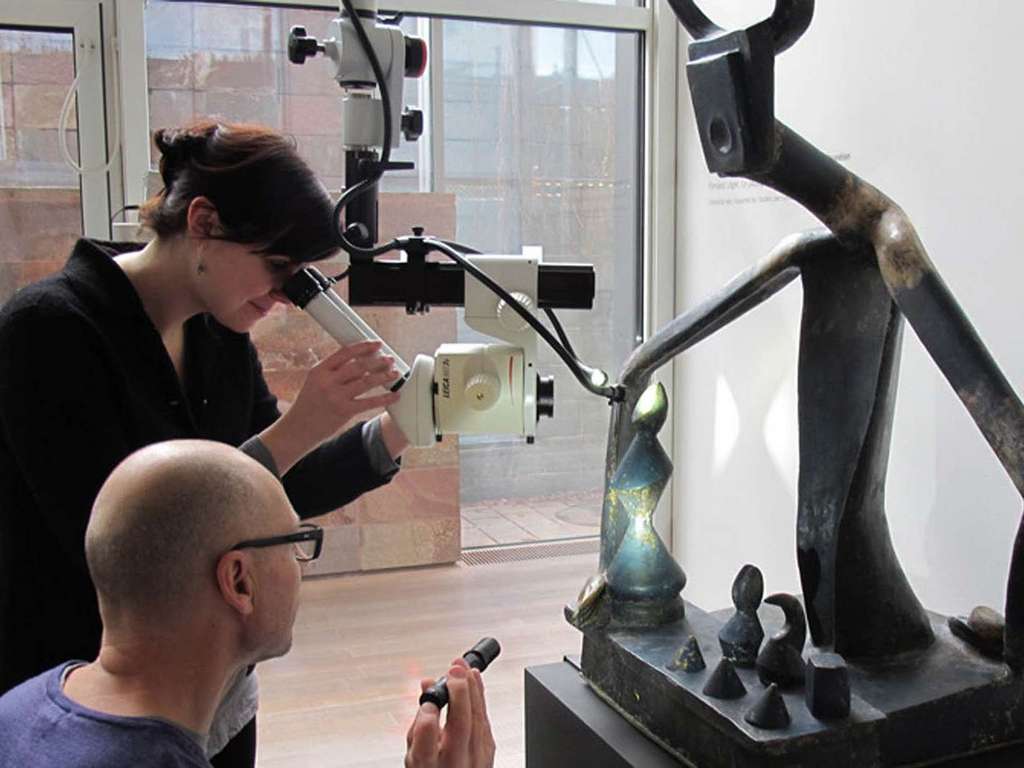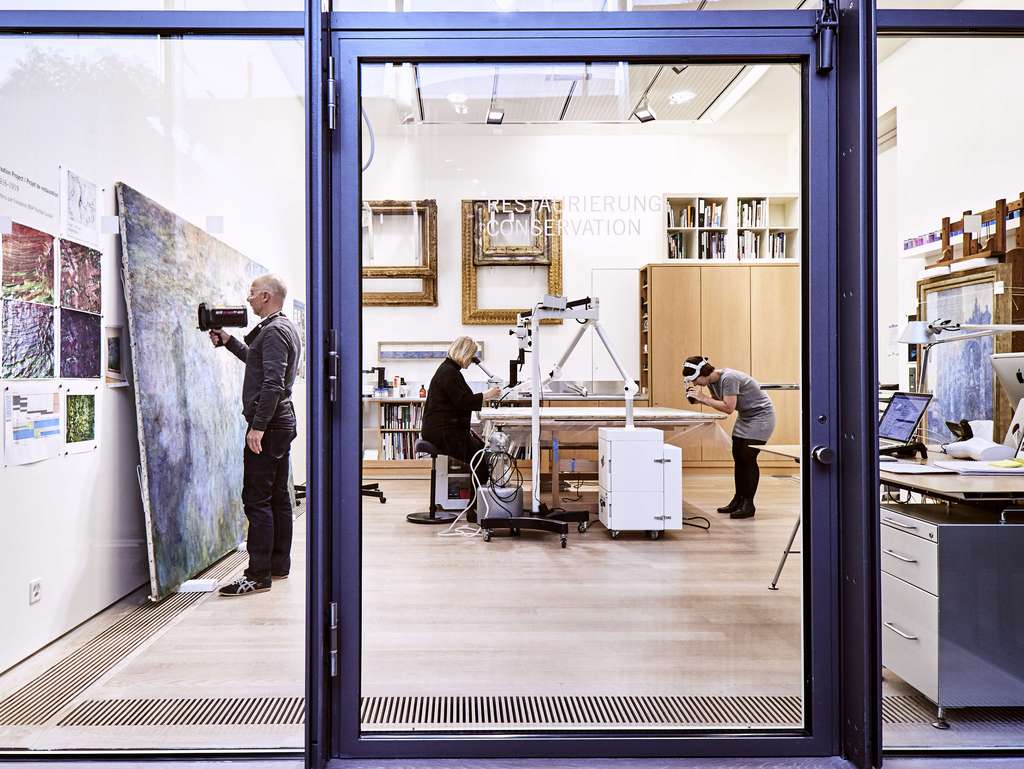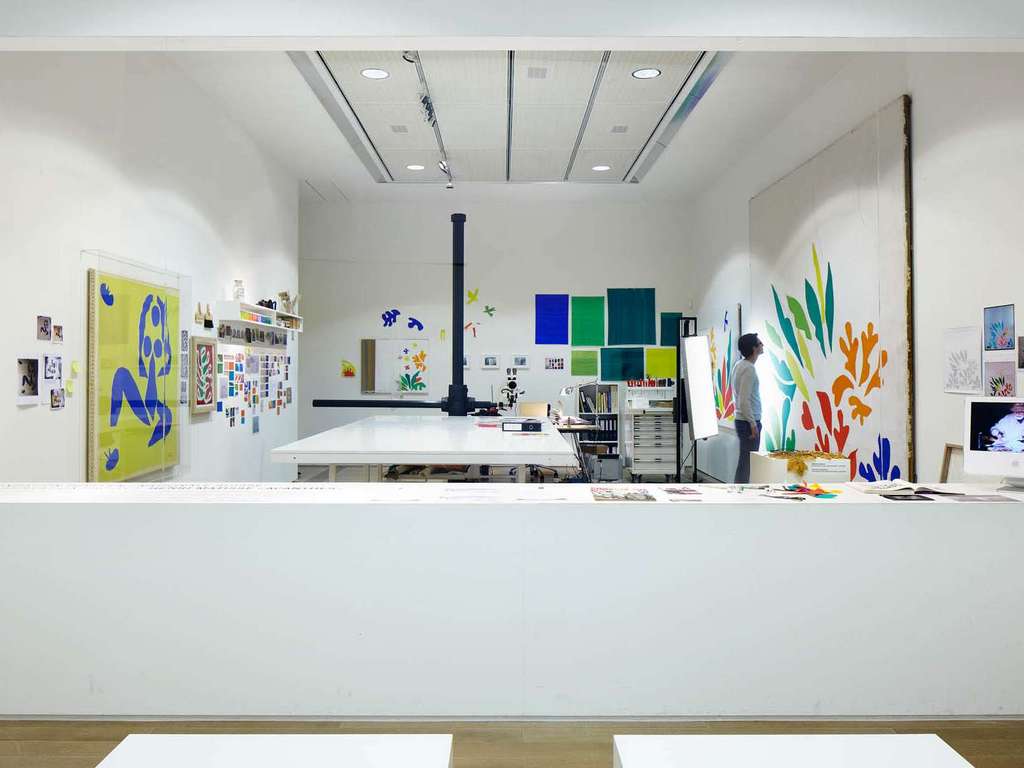Fernand Léger: Subtle restoration
Fernand Léger's painting Le passage à niveau was thoroughly examined and conserved as part of a restoration project funded by the Fondation BNP Paribas Suisse. It revealed that the painting is not inherently fragile — fortunately — but that the artist's choice of materials and the subsequent effects of time were responsible for the work's present condition.
Art-historical context
The condition of the hundred-year-old painting Le passage à niveau had been considered fragile since the opening of the Fondation Beyeler in 1997, due to the extensive craquelure and brittle-looking surface. In order to prevent any damage, the painting was thus never loaned. It was thoroughly examined and restored as part of a restoration project funded by the Fondation BNP Paribas Suisse. Valuable knowledge about the materials, technique, and history was gained over the course of this project.
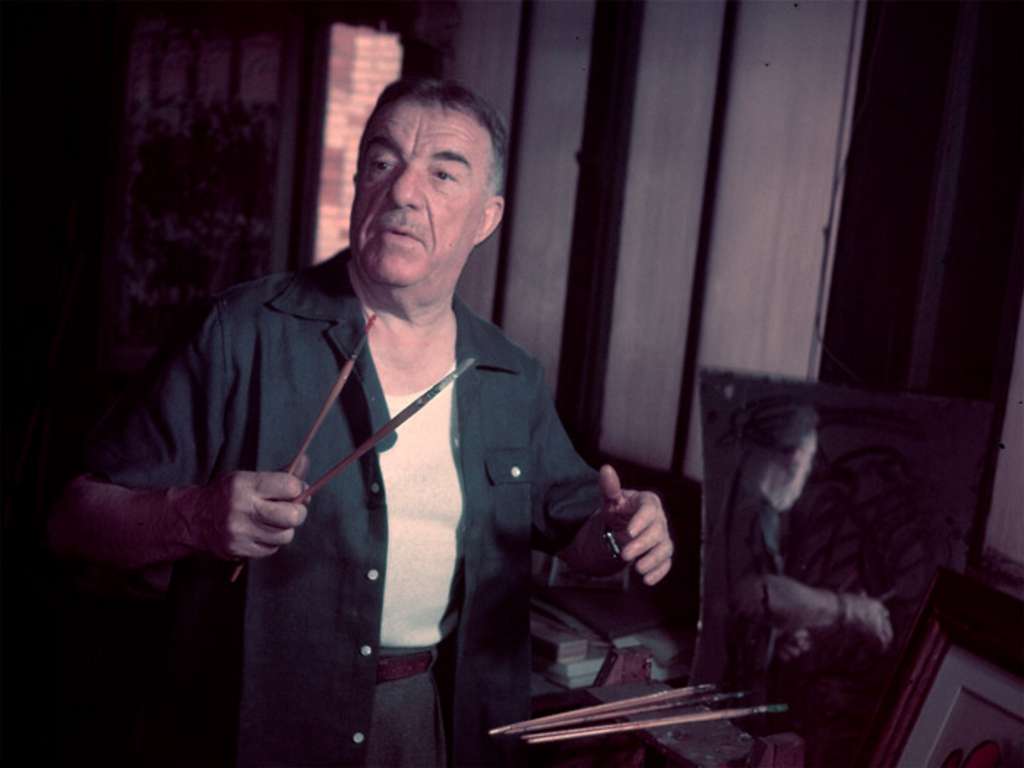
Fernand Léger: Biography
The French painter began his study of art early in life, at the Académie Julian in Paris and other institutions. At the turn of the century, he painted his first works influenced by Impressionism. His admiration for Cézanne helped him break away from Impressionism and find his own style in 1909. He joined Cubists Picasso and Braque, and together they created the “Section d’Or” group.
He entered his “mechanical period” after serving active duty in the war from 1914 to 1917. In 1925 he painted his first mural in a building by Le Corbusier. In 1929 he taught at the Académie Moderne, together with Amédée Ozenfant. He was a member of the artists' group “Cercle et Carré.” In the early 1930s, he made trips to Austria, the United States, Sweden, Norway, Switzerland, and Greece. After the Germans occupied France in 1940, he immigrated to the United States and lived there until 1945. There he worked as a teacher in addition to painting and making films. In 1945 he returned to Paris and joined the Communist Party. He began working with ceramics in the late 1940s.
Initial condition
The condition of the hundred-year-old painting Le passage à niveau had been considered fragile since the opening of the Fondation Beyeler in 1997, due to the extensive craquelure and brittle-looking surface. In order to prevent any damage, the painting was thus never loaned. It was thoroughly examined and restored as part of a restoration project funded by the Fondation BNP Paribas Suisse. Valuable knowledge about the materials, technique, and history was gained over the course of this project.
Extreme water sensitivity
One fortunate observation was that the painting is not inherently fragile, but that the artist's choice of materials and subsequent time were responsible for its present condition. For example, Fernand Léger used an unusually water-sensitive primer to prepare the canvas. As a result, contact with moisture early in its history caused considerable damage (figure 1). Invasive restoration techniques in the past also led to the painting's present appearance. Historic photographs were found that helped document alterations suffered by the work, such as abrasions and later overpainting.
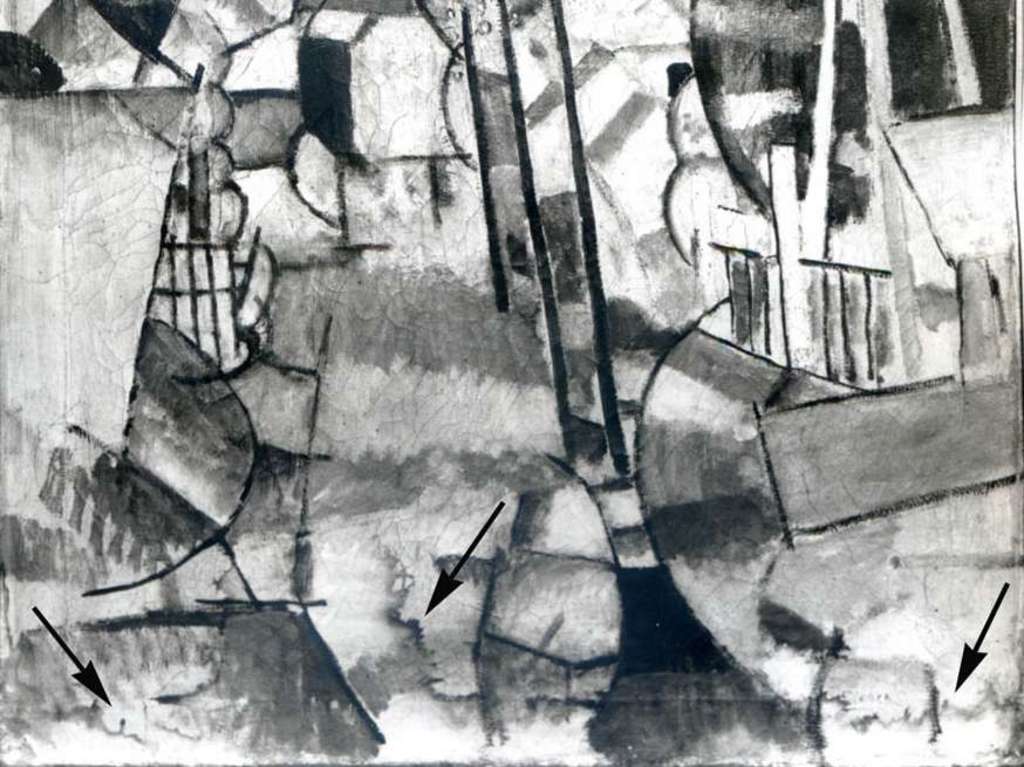
Historical photograph
Figure 1: This historical photograph was decisive for the project: the water damage visible at the bottom edge (arrow) explained why and where restoration work had taken place in the past.
Conservation treatment
An appropriate conservation treatment was devised based on the information gathered. All measures were discreet and can only be seen in details. First, poorly integrated retouching from prior restorations was removed (figure 2). Pinhead-sized abrasions distributed across the entire surface of the painting were retouched and chromatically integrated. All newly applied retouches are reversible and only placed on pre-existing areas of damage. The purpose of these measures was to integrate the irregular and broken painted surface (figure 3) and bring it closer to its original appearance from 1912 — without masking the history and age of the work. The examination of comparable early works by Léger was very helpful in this process. They made it possible to get as close as possible to the original intent of Le passage à niveau. The painting was also given a sturdy new frame with vibration padding. The restoration not only stabilized the work's materials but has also made the composition more legible and accessible to the viewer.
Removal of old retouch
Figure 2: Retouching from previous restorations covered original layers of paint in many areas. Fortunately they dissolved easily and could be reduced with the help of solvents and absorbent paper.
Before/after
Figure 3: Before the restoration (top), the overall impression of the green area of paint was disturbed by losses, abrasions, and previous retouching. After the restoration (bottom), the area appears coherent and authentic again.
Other projects
„THE KING PLAYING WITH THE QUEEN“ - max ERNST
The examinations conducted by the team of conservators provided important information about the sculpture’s construction and the interventions it was subject to over the years.
Overview - Conservation
Since 2001, a dedicated team has been working on the long-term preservation of the collection’s major works so that they will remain accessible to future generations.
„ACANTHES“ - Henri MATISSE
After three years of extensive art-historical research, conservation, and restoration, the Fondation Beyeler completed the greatest conservation project in its history: the scientific examination of Henri Matisse’s Acanthes.
